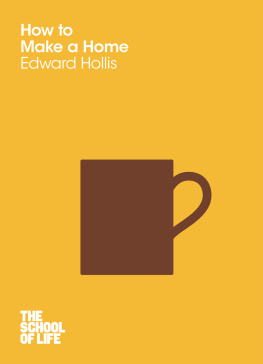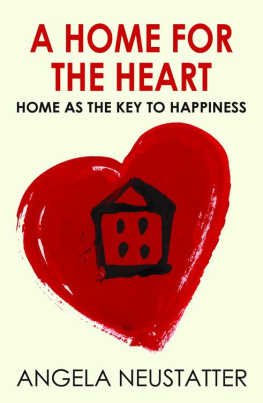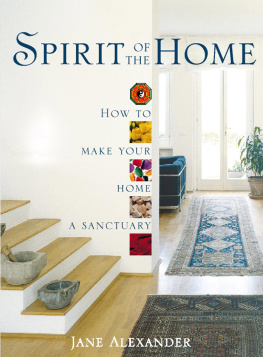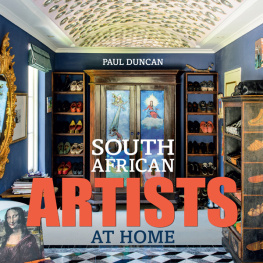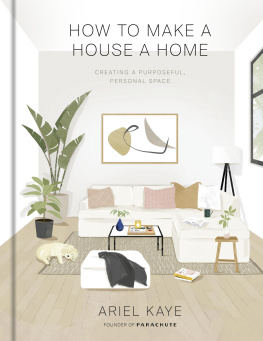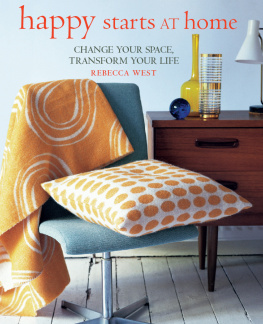E DWARD H OLLIS is an architect, a teacher and a writer, whose books include The Secret Lives of Buildings and The Memory Palace: A Book of Lost Interiors. He lives in Edinburgh, where he is Reader in Interior Design and Director of Research at Edinburgh College of Art in the University of Edinburgh.
T HE S CHOOL OF L IFE is dedicated to exploring lifes big questions: How do we find fulfilling work? Can we ever understand our past? Why are relationships so hard to master? If we could change the world, should we? Based in London, with campuses around the globe, The School of Life offers classes, therapies, books and other tools to help you create a more satisfying life. We dont have all the answers but we will direct you towards a variety of ideas from the humanities from philosophy to literature, psychology to the visual arts guaranteed to stimulate, provoke, nourish and console.
How to Make
a Home
Edward Hollis
MACMILLAN

First published 2016 by Macmillan
This electronic edition published 2016 by Macmillan
an imprint of Pan Macmillan
20 New Wharf Road, London N1 9RR
Associated companies throughout the world
www.panmacmillan.com
ISBN 978-1-4472-9334-7
Copyright The School of Life 2016
The right of Edward Hollis to be identified as the author of this work has been asserted by him in accordance with the Copyright, Designs and Patents Act 1988.
The picture acknowledgements constitute an extension of this copyright page.
Pan Macmillan does not have any control over, or any responsibility for, any author or third party websites referred to in or on this book.
You may not copy, store, distribute, transmit, reproduce or otherwise make available this publication (or any part of it) in any form, or by any means (electronic, digital, optical, mechanical, photocopying, recording or otherwise), without the prior written permission of the publisher. Any person who does any unauthorized act in relation to this publication may be liable to criminal prosecution and civil claims for damages.
A CIP catalogue record for this book is available from the British Library.
Visit www.panmacmillan.com to read more about all our books and to buy them. You will also find features, author interviews and news of any author events, and you can sign up for e-newsletters so that youre always first to hear about our new releases.
To Squid the cat, who can make herself at home anywhere
Introduction
How do you make the perfect home?
Once upon a time there lived a rich man who had everything. He possessed a happy family, a wide circle of friends, a profitable business, and a substantial reputation.
Or thats how the Viennese architect Adolf Loos used to start his story, around a hundred years ago.
At least, hed continue, the rich man had nearly everything; he had everything except a perfect home; and so he decided to seek advice on how he should get one. He summoned a famous architect and asked him what he should do. The architect went to the rich mans house and looked around, and told him to throw out all his furniture and his clutter. He brought in an army of craftsmen and tradesmen and artists, and soon enough our rich man had the most beautiful house in the city.
Wherever he looked in his new home, he found the art of the architect: in the designer doorknobs, in the beautiful chairs, the artfully scattered cushions, the subtly patterned carpets, and in even the simple and elegant plates on which his dinner was served. The architect had thought of everything. Our rich man had a perfect home. His life, finally, was complete.
There are all sorts of books that will advise you, as Adolf Looss architect once advised his rich man, about how to make a home. Step into the interiors section of most bookshops, and youll find glossy guides to style, from Moroccan to Mid-Century Modern. You can find guides to the homes of the rich and famous, and catalogues of styles in French or English furniture from the eighteenth century. There will be DIY manuals for making curtains, distressing sideboards, fitting bedrooms into cupboards, rag-rolling walls, plumbing toilets and laying tables.
Literature of this kind has an ancient history. In ancient Rome, the architect Vitruvius wrote a treatise for the Emperor Augustus and the statesman Pliny described his ideal holiday house as a self-serving illustration of his domestic and moral probity. Its a literature that has echoes in the moral and domestic economies of Confucianism, the Hindu Shilpa Shastras, and in ideal homes from William Morriss Red House of the 1860s to Le Corbusiers machines for living in of the 1920s.
Then there are guides for the perplexed housewife, written by Mrs Beeton in the nineteenth century and Martha Stewart in the twenty-first. They provide recipes not just for food, but for household management and etiquette, dispensing advice on how to deal with servants, get stains out of carpets, or pay a social call. This advice has in common with Pliny or Confucius a conviction that domestic and moral order are aligned. After all, in traditional parlance, untidiness and immorality meet in the Slut and the Slattern.
Then there are arbiters of taste. Elsie de Wolfe, writing on decoration in early twentieth-century America, saw herself as a missionary, bringing good taste to the masses in a way that Terence Conran, Ingvar Kamprad, Laura Ashley or Kelly Hoppen have followed since. Their harmoniously accessorized, standardized approaches to home dcor seem to provide a formula or a kit, the purchase of which will help the rest of us to avoid errors in aesthetic judgement and domestic arrangement.
And finally, this sort of advice has made its way onto the television: Changing Rooms, asking How Clean is your House?, telling you not just How to Cook but How to Eat, or, to match, What Not to Wear, and how, in general, to Get Your House in Order. The drama of the TV makeover, with its limited timescale and budget, its miracles wrought with MDF, and the tearful (for better or for worse) Grand Reveal, is designed to show how the making of a home can make (or break) the people who live in it, too.
This book is not advice of that kind. Reading it will not make your home more tasteful. It will not reveal this years colours, or next years chaise. I have no clever table-laying tips or recipes to share. This is not a book about design, or not solely. There are, it will argue, no definitive laws we can use to create beauty or domestic harmony. I am not, I hope, like the architect who advised the rich man how to perfect his home.
But this book will attempt to answer the question contained in its title: how can you make a home? Its a deliberately ambiguous question, for, as we shall see, making a home, being at home, feeling at home, or making yourself at home are things we can do anywhere, any time. Home, it will argue, is less attached to bricks and mortar, cushions and curtains, than to a sense that we deserve to belong in our surroundings, to shape them, to change them, and in doing so, to dwell in them.
This book will pose six questions: How do you build a home? How do you furnish a home? How do you decorate a home? How do you collect a home? How do you keep a home? And, finally, how can you make yourself at home without having one?
These questions take us through the elements that comprise the home: firstly the architecture of the house; secondly the furniture we carry with us from house to house; thirdly, the decoration of our homes; fourthly, the clutter we collect when we make a home; fifthly, that much-unloved aspect of making a home: housework; and finally, the public sphere from which, or in which, we seek intervals of refuge and rest.
Next page
